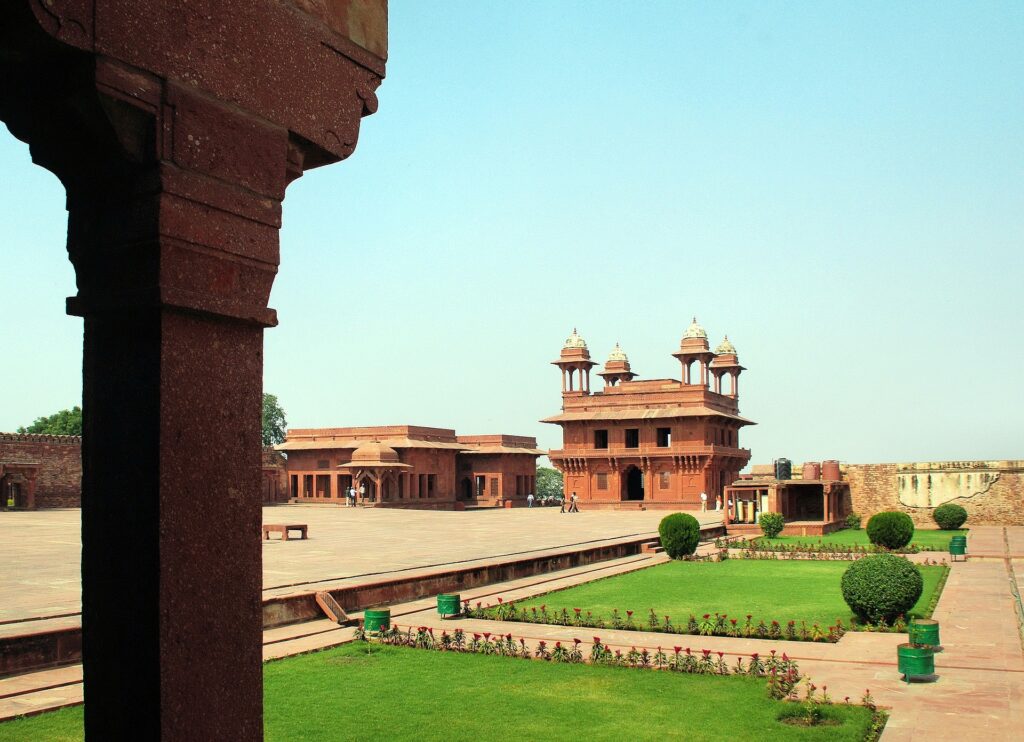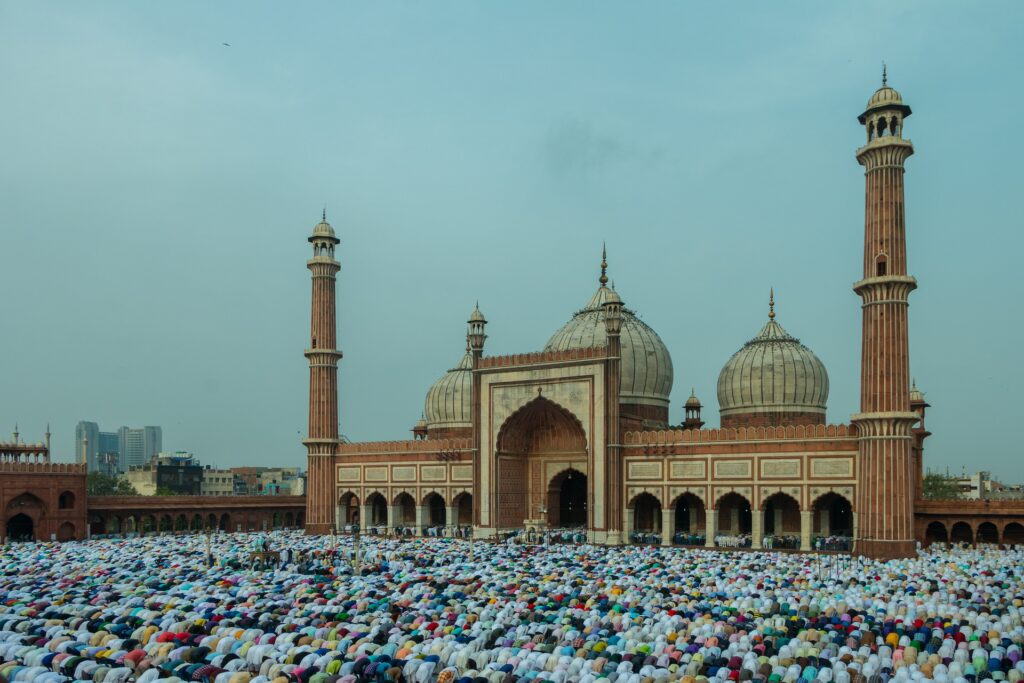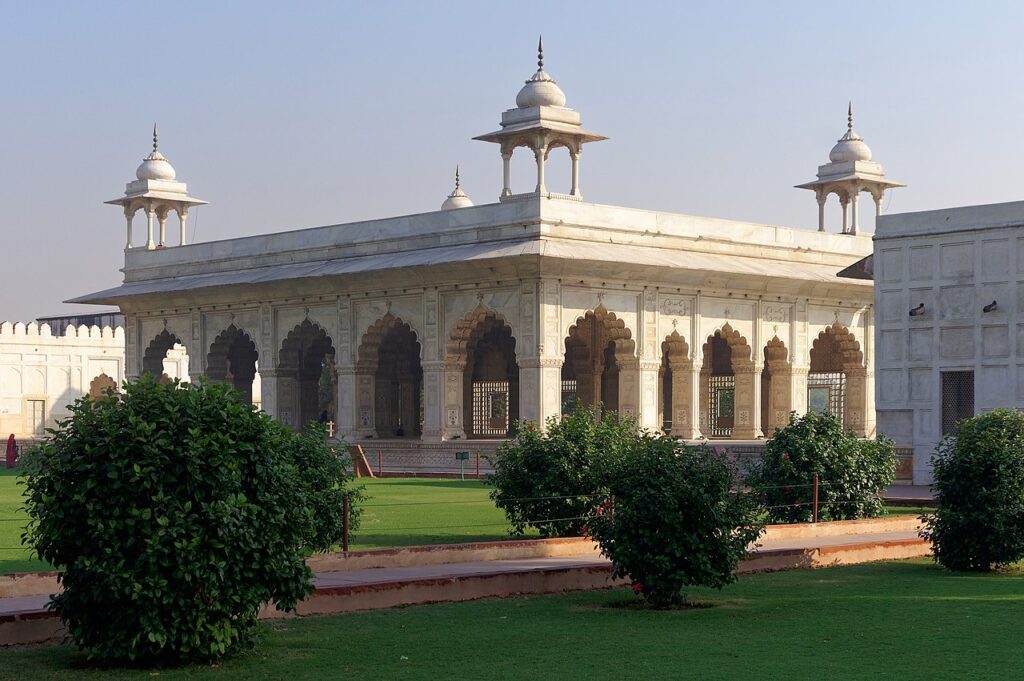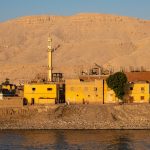9 Facts About Fatehpur Sikri
Introduction
Fatehpur Sikri, a 16th century imperial city near Agra, represents the grandeur and ideals of the Mughal Empire. Founded as the capital by Emperor Akbar, the city was built on the ruins of ancient monuments but had to be abandoned in 1586 due to lack of water. Fatehpur Sikri is a fascinating testament to Mughal architecture and remains a UNESCO World Heritage site. Here are 9 facts about Fatehpur Sikri.
History of Fatehpur Sikri

Fatehpur Sikri was founded in 1571 by Emperor Akbar, one of the most prominent Mughal rulers. Akbar built the city to honor the Sufi saint Sheikh Salim Chishti, who had predicted the birth of Akbar’s son, Jahangir. The city served as the capital of the Mughal Empire for approximately 14 years and was meticulously planned with a blend of Persian, Indian, and Islamic architectural styles.
Fatehpur Sikri became a hub of political, cultural, and religious activity, featuring grand structures like the Buland Darwaza, Jama Masjid, Diwan-i-Khas, and Panch Mahal. However, the city was abandoned in 1585 due to water scarcity and strategic reasons. Despite its brief period of glory, Fatehpur Sikri remains a UNESCO World Heritage Site, celebrated for its architectural brilliance and historical significance.
Architecture of Fatehpur Sikri
The architecture of Fatehpur Sikri is a remarkable blend of various regional styles. It features Persian, Indian, and Islamic elements, which together create a unique and stunning aesthetic. The city is home to several important structures, each showcasing exquisite craftsmanship and intricate designs. The Buland Darwaza, or “Gate of Magnificence,” is one of the largest gateways in the world, standing 54 meters tall and displaying intricate carvings and inscriptions. The Panch Mahal is a five-story palace designed as a pleasure pavilion, with each level offering panoramic views and excellent ventilation. The Jama Masjid is one of the largest mosques in India, adorned with beautiful frescoes and calligraphy. Together, these structures highlight the sophisticated architectural style and cultural synthesis that define Fatehpur Sikri.
Buland Darwaza – Gate of Magnificence

The Buland Darwaza, or “Gate of Magnificence,” stands as a testament to Mughal architectural prowess and the grand ambitions of Emperor Akbar. This colossal gateway, one of the largest in the world, rises to a towering height of 54 meters, making it a truly awe-inspiring sight. Its construction, commissioned by Akbar in 1576, was intended to commemorate his momentous victory over Gujarat, a strategic achievement that significantly expanded the Mughal Empire.
The Buland Darwaza is not merely a gateway but a monument that embodies the spirit of Mughal power and artistic brilliance. It is built of red sandstone, a material favored for its durability and rich color, and intricately carved with intricate floral designs and inscriptions from the Quran, reflecting the Mughal emperors’ embrace of Islamic art and culture. The gateway’s impressive façade is adorned with delicate jalis, intricate screens that allow for filtered light to cast intricate shadows, adding a layer of visual complexity and grandeur. The inscription above the main archway proclaims the emperor’s triumph, proclaiming, “This gate is the mark of a victory by God’s grace.”
Fatehpur Sikri as a Ghost Town
Despite its initial grandeur and prominence, Fatehpur Sikri was abandoned in 1585, merely 14 years after its completion. The reasons for this sudden abandonment are primarily attributed to a severe scarcity of water, which made sustaining the population difficult. Additionally, the strategic need to relocate the capital closer to the Punjab region, where the Mughal Empire faced external threats, necessitated the move. This shift led to the desertion of the once-thriving city.
Today, Fatehpur Sikri is often referred to as a “ghost town” due to its deserted streets and empty buildings. The majestic structures that once buzzed with activity now stand silent, offering a haunting glimpse into the past. The abandoned city, with its well-preserved palaces, mosques, and courtyards, provides a fascinating and poignant reminder of the transience of human endeavors and the impact of environmental and strategic factors on historical events.
Visitors to Fatehpur Sikri can walk through the empty halls of the Diwan-i-Khas, stand under the towering Buland Darwaza, and explore the intricate architecture of the Jama Masjid, all while reflecting on the city’s brief but impactful history. The ghostly ambiance of Fatehpur Sikri, with its timeless beauty and silent grandeur, continues to captivate and intrigue those who venture into this historical marvel.
Jama Masjid

The Jama Masjid in Fatehpur Sikri is one of the largest mosques in India, constructed in 1571. It serves as a prime example of Mughal religious architecture. The mosque is adorned with beautiful frescoes and calligraphy, reflecting the intricate artistry and devotion of the period. It remains an important site for worship and pilgrimage, attracting visitors with its serene atmosphere and architectural splendor. The Jama Masjid stands as a testament to the religious and cultural significance of Fatehpur Sikri during the Mughal era.
Queen’s Palace – Jodha Bai

Jodha Bai, also known as Mariam-uz-Zamani, was a queen of the Mughal Empire and the primary wife of Mughal emperor Akbar. She was a Rajput princess, daughter of Raja Bharmal of Amer, and her marriage to Akbar in 1562 was a significant event in the history of the Mughal Empire, representing a union between the two powerful dynasties.
The construction of Jodha Bai’s Palace, also known as the “Mariam-uz-Zamani” Palace, was commissioned by Akbar as a gift to his beloved wife. The palace, situated within the grand complex of the Agra Fort, serves as a testament to their love and the harmonious blend of Rajput and Mughal cultures.
The palace’s architectural style is a harmonious blend of Rajput and Mughal elements. The use of red sandstone, a characteristic of Rajput architecture, is prominent, while the intricate carvings and delicate jalis (latticed screens) are reminiscent of Mughal craftsmanship. The palace features spacious courtyards, airy halls, and elegant private chambers, showcasing the grandeur and refinement of the Mughal court. The palace is a remarkable example of how Akbar, a patron of the arts, sought to create a space that would reflect his love and respect for Jodha Bai and her heritage.
Diwan-i-Khas (Red Fort)

The Diwan-i-Khas, or “Hall of Private Audience,” is a notable structure in Fatehpur Sikri where Emperor Akbar held private meetings with his advisors and guests. This hall is renowned for its central pillar, which supports a platform where Akbar’s throne was placed. The intricately carved pillar symbolizes the unity of various religions, reflecting Akbar’s inclusive approach to governance and his interest in fostering religious harmony. The Diwan-i-Khas is a prime example of the architectural ingenuity and cultural synthesis characteristic of the Mughal era, showcasing the sophistication and depth of Akbar’s court.
Panch Mahal – Five Story Palace

The Panch Mahal is a five-story palace in Fatehpur Sikri that served as a pleasure pavilion for the royal family. Each level of the structure is progressively smaller, creating a distinctive pyramidal shape. This open design allowed for excellent ventilation and provided panoramic views of the surrounding area. The Panch Mahal is a testament to the sophisticated architectural style of the Mughals, showcasing their ingenuity in creating structures that were both aesthetically pleasing and functional. The palace’s unique design reflects the Mughal appreciation for natural beauty and comfort, making it a notable feature of Fatehpur Sikri.
UNESCO World Heritage Site
In 1986, Fatehpur Sikri was designated as a UNESCO World Heritage Site, a recognition that underscores its immense cultural and historical significance. This designation highlights the city’s outstanding universal value as a masterpiece of Mughal architecture, reflecting the zenith of Emperor Akbar’s reign and his innovative vision. Fatehpur Sikri is celebrated for its harmonious blend of Persian, Indian, and Islamic architectural styles, which together create a unique and stunning aesthetic.
The designation as a UNESCO World Heritage Site has helped to preserve and protect Fatehpur Sikri’s numerous historical structures, ensuring that future generations can continue to appreciate its architectural brilliance. Each year, thousands of tourists from around the world visit the site to marvel at its well-preserved monuments, such as the Buland Darwaza, the Panch Mahal, and the Jama Masjid. These visitors are drawn not only by the beauty of the buildings but also by the fascinating stories and historical context that surround them.










